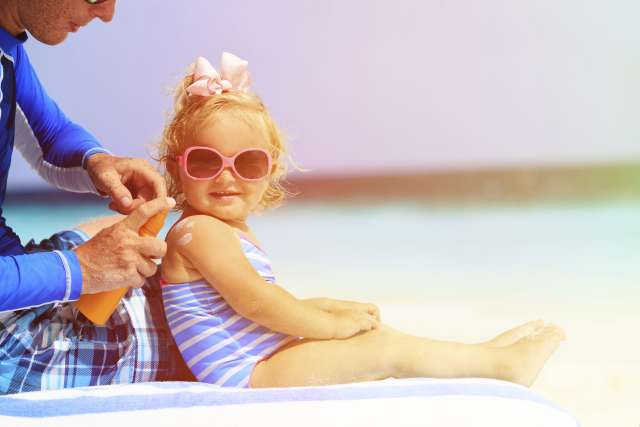Dear Doctors: We recently relocated for my husband's job. It's hotter here and a lot more humid than our previous home. All three of our children, including the baby, are suddenly dealing with heat rash. Why does that happen? How can we help them avoid it?
Dear Reader: It has been a long, hot summer, and we suspect you are not alone in dealing with the unpleasant realities of heat rash. The condition is also sometimes referred to prickly heat, a succinct summary of the symptoms and their root cause. In medical language, it is known as miliaria. These terms all refer to the patches of small, raised bumps that develop when someone's sweat glands and sweat ducts become blocked, often due to heat and humidity. These blockages can occur at the surface of the skin, or deeper within the sweat duct.
When your sweat ducts or glands become blocked, perspiration can't spread out across the surface of the skin. Instead, the moisture backs up within the epidermis. This leads to irritation and inflammation and a constellation of other symptoms. These can include itchiness that can become severe, a persistent prickling or burning sensation and swelling. In pale skin, the bumps of heat rash typically appear as areas of reddening. In darker skin, a change in skin color in the affected area may not be apparent.
The blockage that leads to heat rash is caused by a persistent layer of perspiration, often mixed with the skin's natural oils. It occurs when sweat becomes trapped, often due to high humidity, which prevents adequate evaporation. Babies and young children, whose sweat glands have not yet fully developed, are particularly susceptible to heat rash. So are adults who are overweight or obese, and anyone who is overdressed in hot and humid conditions.
Common sites of the condition include the backs of the knees, beneath the breasts, the armpits, creases of the elbows, neck, inner thighs, back, waist and groin area.
While uncomfortable, heat rash is usually harmless. Treatment focuses on cooling the affected area and keeping it clean. This can be done with a moist cloth or a cool bath or shower.
Dress your children in a single layer of loose-fitting clothing, which helps eliminate friction. Natural fibers, like cotton and linen, are more breathable than synthetics. Shorts and sleeveless tops are helpful. So is proper ventilation. This same approach to preventing heat rash applies to adults, too. When it comes to your baby, do frequent diaper checks, and change it as soon as it is wet or soiled.
Areas of persistent itchiness in someone with heat rash can be soothed with over-the-counter ointments and lotions meant to treat rash.
As with any site of inflammation, infection is possible. This can cause sweat ducts with deeper blockages to develop small pockets of pus. If this occurs, it is important to seek medical help in dealing with the infection. When treated, heat rash goes away in a day or two. If the condition persists or appears to get worse, see your health care provider.
(Send your questions to [email protected], or write: Ask the Doctors, c/o UCLA Health Sciences Media Relations, 10960 Wilshire Blvd., Suite 1955, Los Angeles, CA, 90024. Owing to the volume of mail, personal replies cannot be provided.)





